Page 7
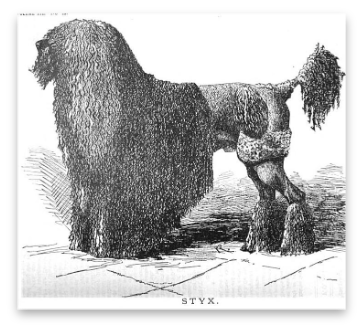
The last issue of the American Kennel Register rolled off the presses in January 1889. James Watson had now been brought into the fold. At the very next meeting of the AKC Executive Committee, he was there, this time representing the American Spaniel Club. After the next elections, in 1890, he was appointed to the Stud Dog Committee. It was an important post since it was this committee which decided what new breeds would be admitted and whether individual dogs, based on their pedigrees, could be registered. This, of course, was just the type of job that Watson had longed for. In 1892, he was made chairman of both the Stud Dog and Rules Committees. He would continue to attend AKC meetings for the rest of his life, representing the American Spaniel Club and the Collie Club of America, as well as clubs in California, Colorado and Washington, who could not afford to send their own delegates.
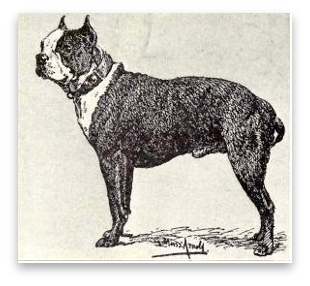
Few people know today that Watson is responsible for giving the Boston Terrier its name. In the early days, Bostons were known as "round-headed bull and terriers," and they competed in show rings with the Bull Terriers. This led to lots of confusion, of course, and the new guys rarely won. Finally, breeders decided that they needed to gain separate recognition as a distinctive breed. The name they picked for their dogs was the "American Bull Terrier." Watson was Chairman of the Stud Dog Committee when this proposal landed on his desk. He said "No" and pointed out that there would only be more confusion. When he saw that breed activity was centered around Boston, Massachusetts, he suggested the name Boston Terrier. It was quickly accepted. He's also partly responsible for making sure that the little dogs bred true. It was Watson who insisted that no dog could be registered who had more than one cross to a Bulldog or terrier in the third generation.
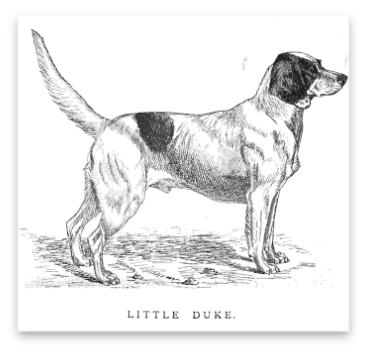
It was also due to Watson that we have our definition of what constitutes and "American-bred" dog. When Watson's Collie Ch. Clipper won the prize for "Best Collie Bred in America" at a Philadelphia show, a protest was lodged. Clipper's mother, Nesta, had been sent to England to be bred. This led to the following ruling: "A bitch owned in this country, sent to any foreign country to be bred, and returned to this country to whelp, the progeny shall be considered as American bred."
In 1898, James Watson was appointed the first editor of the
American Kennel Gazette. He greatly increased the editorial content, adding articles about breeds and kennels and news items. He would hold this position for two years, but didn't really find it satisfying. In 1900, he left to found another dog magazine, Field and Fancy. This would become an important voice in the dog world and was very successful. It's name was later changed to Popular Dogs and it would continue publication to about the early 1970s.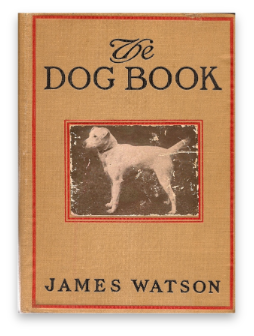
Watson is best known among dog historians and book collectors as the author of
The Dog Book. This is considered by many to be the finest early work on dogs in America. It is meticulously researched and studded with Watson's own observations and opinions on breeds. It features photos and drawings of all breeds, many of them rarely seen in the country at that time. Like so many of the early books, The Dog Book was first offered in serial form in 1905. Subscribers would collect the serials and have them bound. The first published edition comprised two volumes, published in 1906 in both the US and Great Britain. In 1909, it came out in a single 8 x 10 volume, which in the trade is referred to as "quarto." In 1912, it was reprinted in a smaller single volume. The book proved so popular that it was reprinted into the 1920s. This book is an ABSOLUTE MUST for every dog book collection. There's a copy in our ebay store.So, now you have the story of James Watson and his involvement with the birth and early history of the American Kennel Club. I'll leave it for you to decide if he was the most influential man in American dog history. I just want to tip my hat to the man for all he accomplished. His magnificent work, The Dog Book, has been a tremendous aid to legions of writers and he also contributed part of his collection to the AKC. In 1894, he presented to the Club a COMPLETE set of catalogs from the every bench show held in this country from 1877 until that date. Many included notations of his observations of the dogs exhibited. These have proven a valuable source of information for future dog writers.

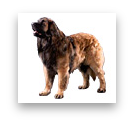
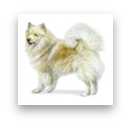
By the way, as of July 10th, there are three new breeds added to the AKC line-up: the Cane Corso, the Icelandic Sheepdog and the Leonberger. (Time out for a my last act of shameless promotion: I first wrote about two of these breeds in 1986. There are chapters on the Icelandic Sheepdog and the Leonberger in
A Celebration of Rare Breeds, Volume I and a chapter on the Cane Corso in Celebration, Volume II.)Until next month, our best to all of you. Cocoa insists that you give your dogs a good belly rub. Please try to stay cool.
Happy Collecting,
Cathy, Harvey & Cocoa
P.S. There is one series of articles, "The Beginnings of the A.K.C.," by Amy Fernandez, which does address James Watson. This series makes for good reading and covers some of the same ground that we do in this newsletter. A round of applause is due to Amy for all her effort. Alas, because of the scope of the articles, Amy could not go into depth on Watson. If she had, this would have been a really short newsletter!
